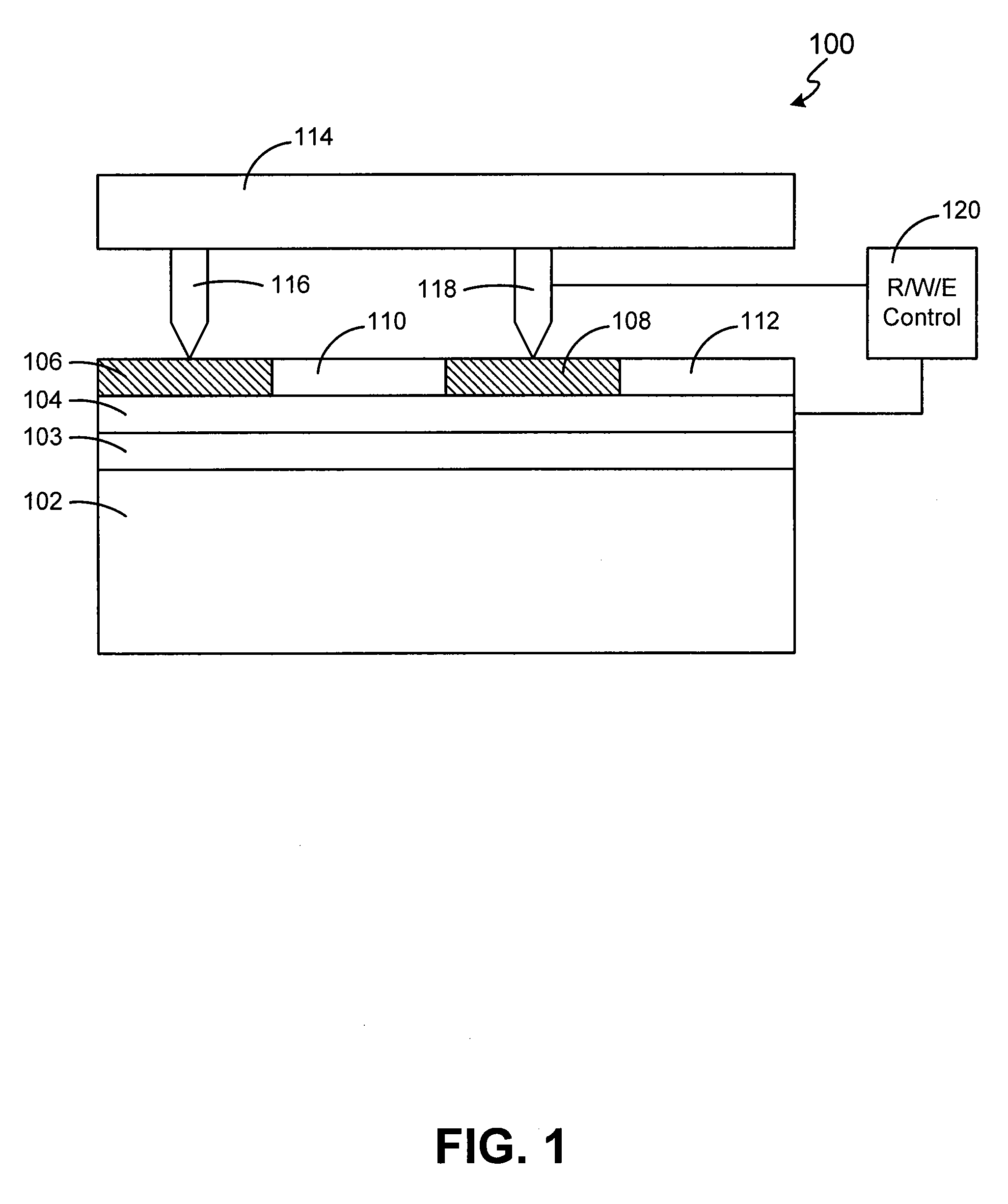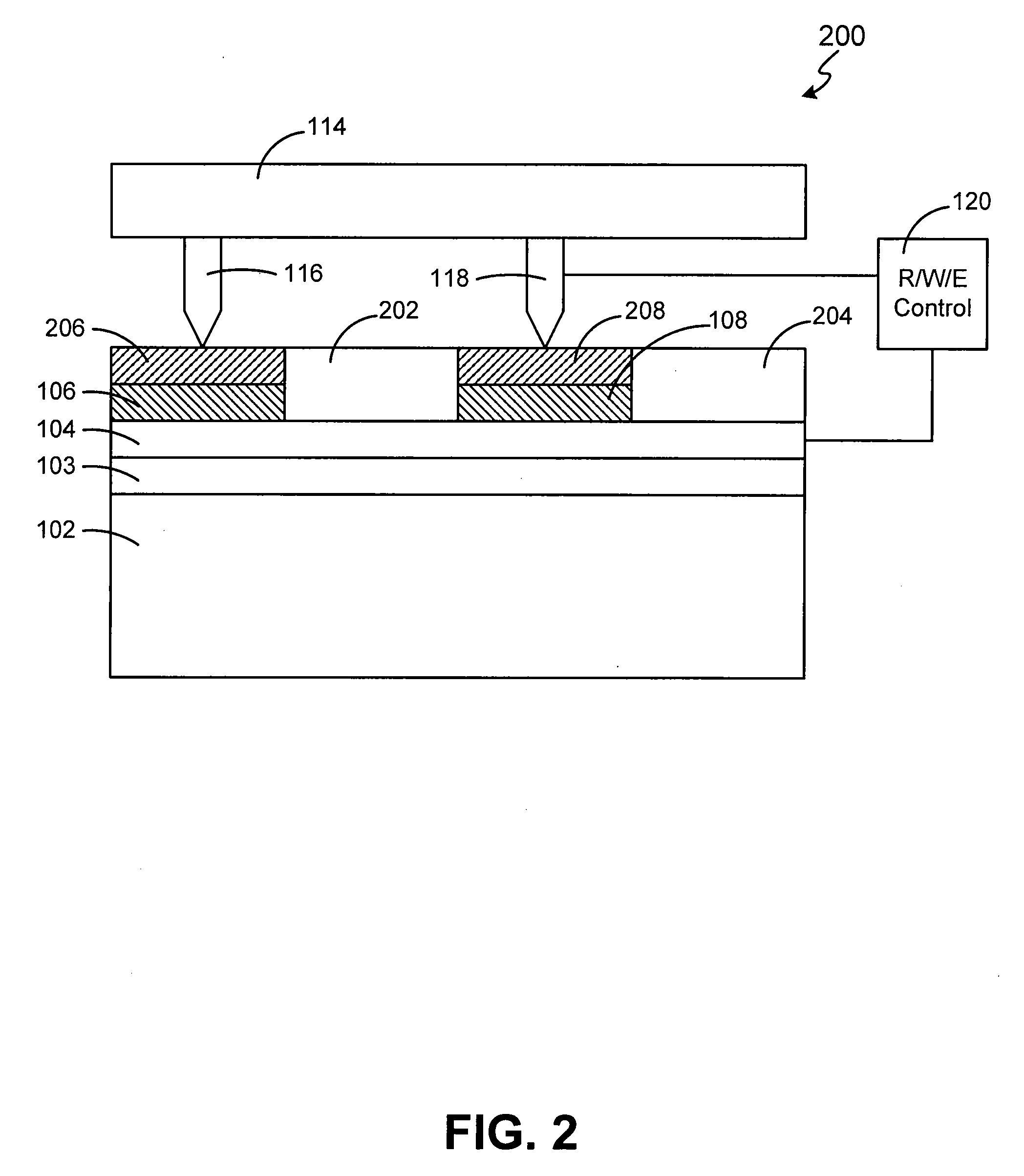Probe storage device, system including the device, and methods of forming and using same
a technology of data storage and probe, which is applied in the field of data storage devices and systems, can solve the problems of consuming relatively large amounts of energy for data storage, difficult and inexpensive manufacturing, and particularly volatile dynamic ram (“dram”), and achieves low energy consumption, easy and inexpensive manufacturing, and low cost.
- Summary
- Abstract
- Description
- Claims
- Application Information
AI Technical Summary
Benefits of technology
Problems solved by technology
Method used
Image
Examples
Embodiment Construction
[0026] The present invention generally relates to programmable probe-storage devices, to systems including the devices, and to methods of forming and using the devices and systems. Devices and systems of the present invention may be used to replace FLASH, DRAM, SRAM, PROM, EPROM, EEPROM, and HDD devices, or any combination of such memory.
[0027]FIG. 1 illustrates a portion of a probe-storage system 100 in accordance with exemplary embodiments of the present invention. System 100 includes a substrate 102; an insulating layer 103; a first electrode 104; ion conductor structures 106, 108; insulating structures 110, 112; probe mechanism 114, including probes 116, 118; a read / write / erase control circuit 120; and an actuator (not shown) to move the probes relative to the substrate. Although illustrated with one (common) first electrode 104, two ion conductor structures, two insulating structures, and two probes, those skilled in the art appreciate that systems in accordance with the prese...
PUM
 Login to View More
Login to View More Abstract
Description
Claims
Application Information
 Login to View More
Login to View More - R&D
- Intellectual Property
- Life Sciences
- Materials
- Tech Scout
- Unparalleled Data Quality
- Higher Quality Content
- 60% Fewer Hallucinations
Browse by: Latest US Patents, China's latest patents, Technical Efficacy Thesaurus, Application Domain, Technology Topic, Popular Technical Reports.
© 2025 PatSnap. All rights reserved.Legal|Privacy policy|Modern Slavery Act Transparency Statement|Sitemap|About US| Contact US: help@patsnap.com



